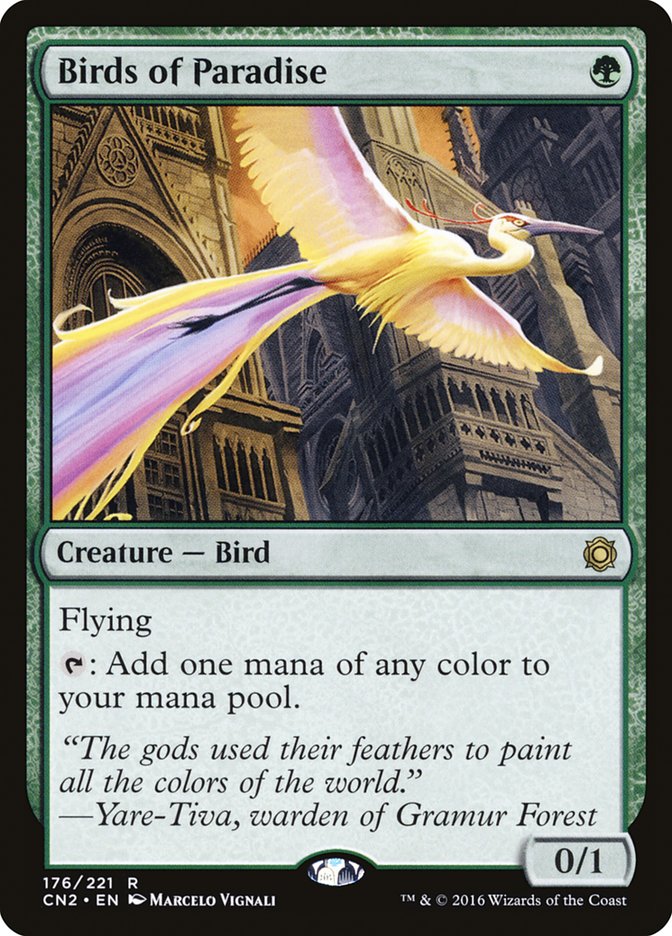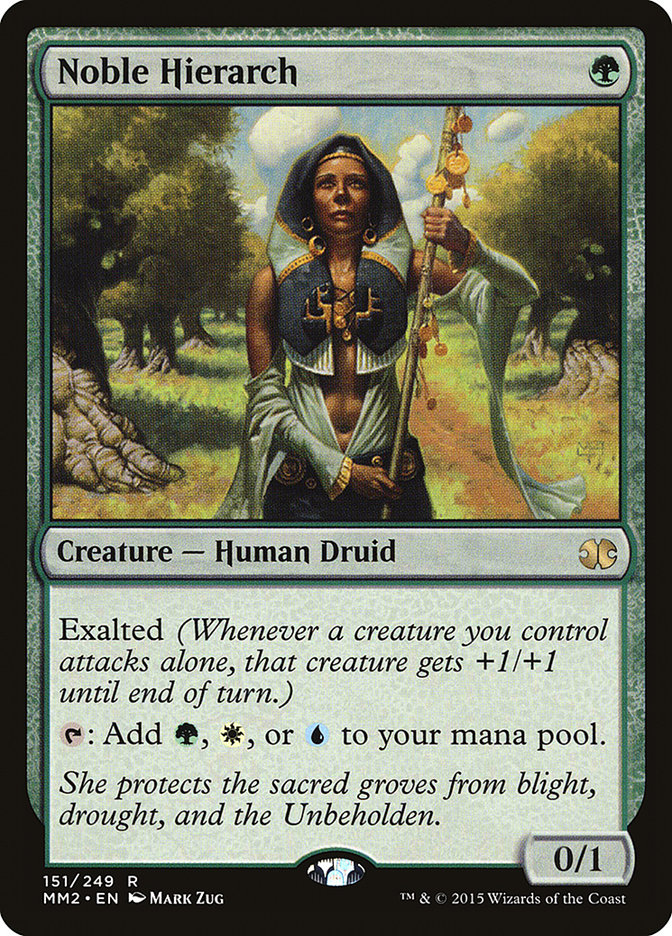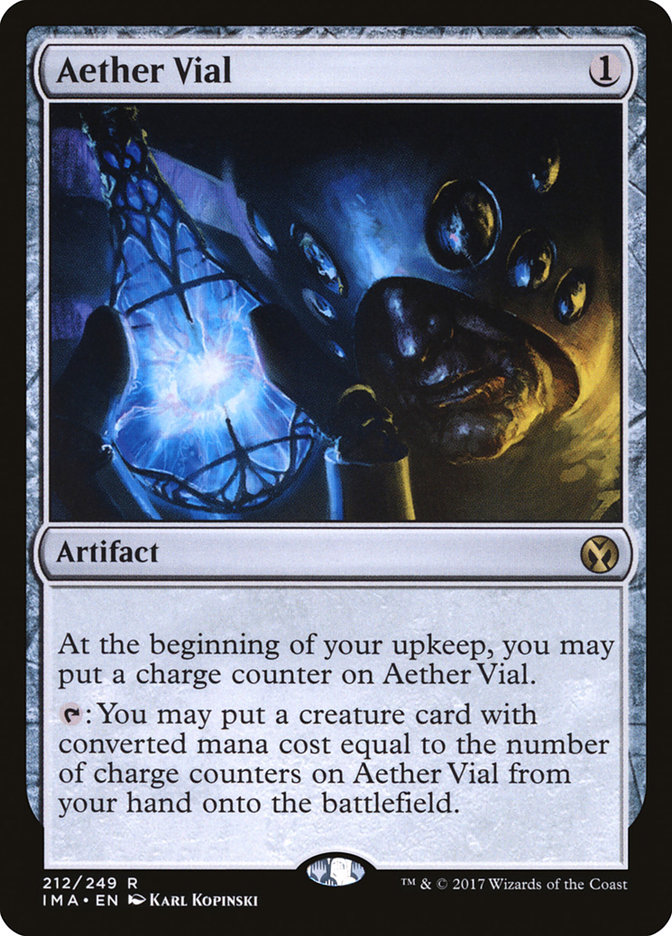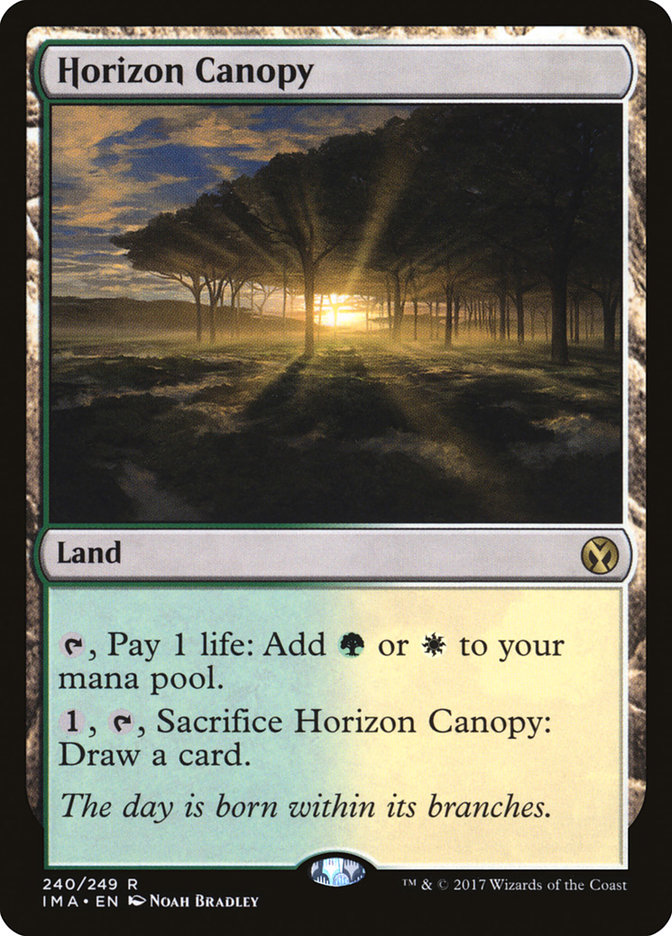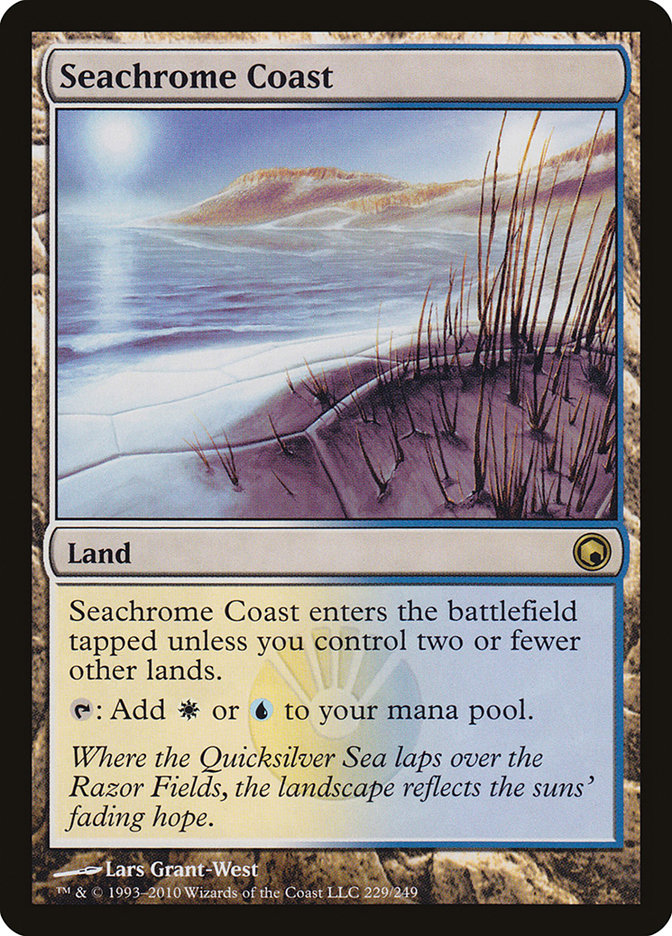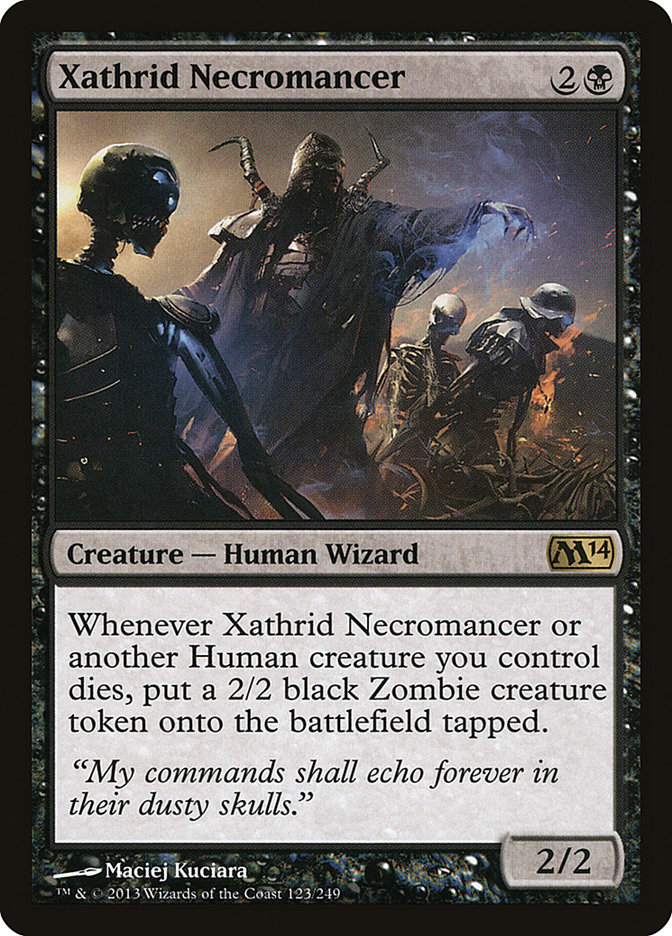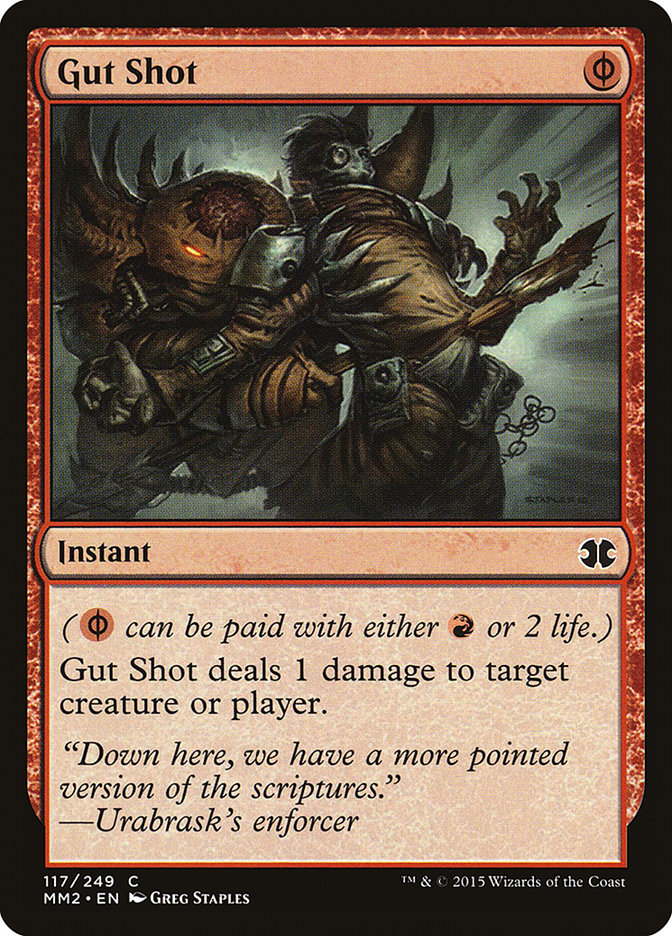I’ve been playing Magic for a long time. I was introduced to the game in
the 90s, went to my first FNM in 2002, and got my DCI card at 2003
Regionals, where I finished 5-4-1 with a U/G Madness list I copied verbatim
from a Jeff Cunningham article. When I first started playing competitively,
my hands were too small to effectively riffle shuffle a sleeved deck.
I was always the young kid in those days, competing against older, more
experienced players. Fifteen years later and the script is flipped–most of
my opponents have only been playing for a few years and most are younger
than I am. I’m a grizzled veteran, in both personality and appearance. I’ve
played competitive Magic at every level, from FNM to the Pro Tour with
varying degrees of success.
Much of that success has come via decks that exploit mana creatures. From
Elves in multiple formats to Maverick in Legacy to various flavors of Green
Devotion in Standard, I’ve made a lot of money by making three mana on turn
2 and pressing that advantage. So imagine my surprise when fresh-faced SCG
Tour wunderkind Jonathan Rosum tells me last weekend that he nearly always
declines to kill opposing mana creatures on turn 1.
Bolt the Bird!
It’s one of the first idioms in Magic’s history and is as true today as it
was in 1993. There’s a reason WotC has seen fit to remove one mana
acceleration from Standard in favor of cards like Servant of the Conduit
and Channeler Initiate—Elvish Mystic was too good. Relative to the rest of
Standard it was basically Mox Emerald.
Maybe Jon is too young to remember the days when Llanowar Elves and Birds
of Paradise were omnipresent in Standard, and many of my readers may not as
well, so I’m taking it on myself to ensure that his youthful indiscretion
won’t lead anyone else to ruin.
The idea that you can save your removal for more important threats and
leave your opponent with a superfluous mana creature in the late game is
folly. When an aggressive deck gains that kind of early mana advantage, you
as the reactive player will rarely have the requisite mana to answer their
threats on time. Maybe you can answer their three-drop on turn 2, but the
aggro player will start landing multiple threats a turn and soon their
tempo advantage will snowball out of control.
Every turn a creature stays on the battlefield represents an attack step
whittling away at your life total, and if you have to start tapping out
before their end step to stop the bleeding, you essentially can’t use your
counterspells and they will have a window to either land a powerful threat
like a planeswalker or disrupt you to cement their advantage or prevent a
sweeper from catching you back up.
As the control deck in the matchup, you’re nearly always going to be
favored going long regardless of their threats, so ensuring you get to the
end game is the top priority. That means stymieing your opponent’s early
development as much as possible, so bolt the bird. Tempo is the least
understood of the three major resources in Magic since it’s the least
straightforward, but if you’re going to be successful with and against
decks that rely on tempo, you at least need to respect its importance.
This whole situation wouldn’t be as alarming had Rosum not just finished
picking up his first trophy playing a deck that exploits mana
accelerants–Modern Humans. Noble Hierarch is one of the best mana
creatures ever printed, and Aether Vial fills the same role in a more
powerful and more complicated package. On turn 2 you don’t get to cast a
three-drop, but you can play a two and a one. Next turn you get a two and a
three, and the double-spelling continues until your opponent is hopelessly
far behind on the battlefield. The instant speed and uncounterability are
nice bonuses, but they aren’t what’s fundamentally great about the card.
I spent last week testing various Modern decks in advance of SCG
Philadelphia because I’d recently soured on Dredge. The deck simply doesn’t
get the free wins it used to and if you’re not winning a huge portion of
the games where your opponent doesn’t have hate, you can’t play a linear
deck. I ultimately landed on Humans because the deck fit my playstyle well,
and I was happy to see Rosum publish a breakdown of the deck last Friday.
The article, while informative and presenting sideboard plans that are
coherent with the deck’s plan, doesn’t go into the theoretical
underpinnings of the deck, which is something that I find very valuable as
a guide when making decisions on the fly against matchups you’re unfamiliar
with. However, there is one section where, perhaps unknowingly, Rosum
demonstrates the importance of tempo to the deck, and that is the breakdown
of the recently added Kessig Malcontents:
If I had to give an MVP award to the card that carried me
the most at SCG Dallas, it would absolutely go to Kessig Malcontents.
Initially, I felt that the card was bad against removal heavy decks like
Jund and Jeskai Control, but after thinking about it more it’s just the
reach that you’re looking for to close out the games. I can attest that the
only reason I was able to beat Jeskai Control as much as I did in Dallas
was because my Kessig Malcontents would deal between 2-4 damage; just
enough reach to end the game. The matchups where Kessig Malcontents are
great, it outright kills your opponent and completely shaves off a turn
against decks like Tron, Counters Company, and Scapeshift that can be the
difference between a win and a loss.
It’s reasonable to assume Malcontents would underperform against
heavy-removal decks since you’ll likely not get much damage out of it, but
in practice that damage is very important, because you absolutely need to
close the game out during the window before your early tempo advantage
closes. Having reach is very common in aggressive decks, but Humans can (on
paper) look disruptive enough to the point where reach wouldn’t be that
effective, as it wouldn’t be in a deck like Death and Taxes.
But despite its disruptive elements, Humans is a tempo-based aggro deck
first, whereas Death and Taxes is a mana denial deck first. The tribal
synergies only exacerbate the need to get on the battlefield as quickly as
possible, since you have several cards that scale up in power as a result.
So one of the things I learned when playing Humans was that I shouldn’t try
to grind my opponent out. There is an occasional game where the deck’s low
land count would provide enough virtual card advantage to stay into the
mid-game, but the low curve and lack of removal means you’re still trying
to end the game quickly and not accrue two for ones.
Kitesail Freebooter should be taking either obvious, high-impact cards like
Supreme Verdict or whatever their earliest piece of interaction is.
Meddling Mage should do the same. Thalia, Guardian of Thraben should enter
the battlefield as quickly as possible. Your early sequencing should be
about two things: maximizing your clock and preventing your opponent from
interacting with you for as long as possible.
If your Jeskai opponent gets to trade one for one every turn, they are
going to win. Every turn they have to take off because they can’t cast a
relevant spell or need to spend two mana on a Serum Visions is more time
for you to build on your advantage and further prevent counter play. A
corollary to this is that you need to minimize your likelihood to stumble,
since any missed turn or unused mana on your part opens the window for the
opponent to get back into the game.
With this understanding, I registered the following list for the Team Open:
Creatures (37)
- 4 Meddling Mage
- 4 Noble Hierarch
- 3 Phantasmal Image
- 4 Champion of the Parish
- 4 Thalia, Guardian of Thraben
- 2 Kessig Malcontents
- 4 Mantis Rider
- 4 Reflector Mage
- 4 Thalia's Lieutenant
- 4 Kitesail Freebooter
Lands (19)
Spells (4)

This list is quite close to Rosum’s from Dallas, but the differences are
instructive. Phantasmal Image, while among the best cards in the deck for
its versatility, is a liability in large numbers, since by necessity you
have fewer actual creatures to copy and thus, less of that versatility. It
can also open you up to losing your only worthwhile creature to removal in
response. Trimming one is not a condemnation of the card, but an
acknowledgment of its role.
The switch from a four-two to a three-three split on Horizon Canopy and
Seachrome Coast is due to the fact that multiple Horizon Canopy draws have
a hard time casting Mantis Rider and Phantasmal Image, and you need to be
able to cast your spells on time. Also, the idea that you’re going to win
lots of games from the extra card of Horizon Canopy is wishful thinking.
It’s not negligible,but you shouldn’t prioritize some card drawing over
having the most consistent mana base.
In the sideboard, Xathrid Necromancer may seem like a card that is meant to
grind out removal-heavy decks, but in reality it’s a deterrent to sweepers.
The important part of the effect isn’t that you haven’t lost any total
resources, it’s that you still have a battlefield presence to keep applying
pressure. I was particularly concerned with sweepers so I had a second for
a while, but after realizing this, I decided to find another card that
could serve the same role but at a lower mana cost so I had a better chance
of being able to get an Aether Vial high enough to effectively counter a
sweeper. Selfless Spirit fills that role nicely, is fairly easy to cast
despite not being a Human, and has the added bonus of stopping Anger of the
Gods.
Banisher Priest and Gut Shot give the deck some much needed removal, and
Gut Shot is yet another card that emphasizes the importance of early tempo.
Killing a mana creature or Champion of the Parish at no cost to your own
development is a huge swing, so Gut Shot can have a massive effect on games
while being an underpowered card on paper. I cast it once last weekend on a
Noble Hierarch and the Magic gods saw fit to reward my acumen as my
opponent proceeded to miss their second land drop. You may call it luck. I
call it playing perfectly and getting rewarded.
After a quick exit from the Team Open, I retooled the deck to lower the
curve even further since I was unhappy with the high density of two-drops
in the deck. After a quick Gatherer search I decided Thraben Inspector
would be the best option, not because it provides card advantage, but
because it was easy to cast, and the 1/2 body plays better with Thalia’s
Lieutenant than something like Kytheon, Hero of Akros. A 2/3 doesn’t die in
combat to Snapcaster Mage and can check opposing Goblin Guides, among other
advantages. Successful aggression isn’t about maximizing damage output
against a goldfish, but about ensuring that your creatures keep attacking
in the face of disruption.
I registered the following in the Modern Classic:
Creatures (37)
- 3 Meddling Mage
- 4 Noble Hierarch
- 3 Phantasmal Image
- 4 Champion of the Parish
- 4 Thalia, Guardian of Thraben
- 2 Kessig Malcontents
- 4 Mantis Rider
- 4 Reflector Mage
- 2 Thraben Inspector
- 4 Thalia's Lieutenant
- 3 Kitesail Freebooter
Lands (19)
Spells (4)

Meddling Mage was the easy trim for a Thraben Inspector, because it’s one
of your worst creatures in combat and awkward if you don’t have an idea of
what they have in hand early on, and I sided with trimming a Kitesail
Freebooter over Thalia, Guardian of Thraben despite the latter being
legendary because it’s a card I want to cast on turn 2 in nearly every
game. I compensated for the lost Freebooter by adding a Sin Collector to
the sideboard over an underwhelming Vithian Renegades.
I cast a lot of turn 1 Aether Vials en route to an 11-1 record and a nifty
plaque, raising my record on the weekend to 15-1 with two unfinished
matches–suffice it to say that my teammates didn’t run nearly as well as I
did. Starting on Aether Vial is unfair in this deck because it’s a mana
creature that doesn’t die on turn 1. Mana creatures are great.
The Thraben Inspectors were never great but never bad on their own, which
makes them hard to evaluate, but having the one-drop to cast on turn 1 or
Vial in on turn 2 came up and was relevant often enough that I’m keeping
them. They function much like the Galerider Sliver I used to play in
Mono-Blue Devotion, and as long as you appreciate curving out and don’t
expect too much from them, I think you’ll be happy with the results.
Just to close on one final dig at Jon Rosum, he wrote that the Affinity
matchup, while not great, isn’t as bad as many think. One, if someone ever
says that about a matchup for a deck they champion, you know the matchup is
bad. And yes, the Affinity matchup is significantly below even. It’s the
deck I’ve lost to the most on Magic Online, gave me my only loss last
weekend, and another close three game match that I was fortunate to come
out on top in.
You should mulligan aggressively to a fast start or early disruption and
try your best to stop Cranial Plating or Arcbound Ravager from pumping
either Vault Skirge or Inkmoth Nexus. I also recommend casting the lone
copy of Kataki, War’s Wage in your sideboard on turn 2 against a
battlefield of Glimmervoid, 2x Springleaf Drum, 2x Ornithopter, Vault
Skirge.
Its weakness to Affinity further underscores the theoretical underpinnings
of Humans. Affinity is more explosive in the early turns because it
sacrifices disruption to do so, and with the disruptive elements in Humans
geared toward fighting spell-based strategies, you’re not in a position to
consistently race or play the control role. The heavy sideboard for the
matchup that I employed can only do so much heavy lifting.
None of what I’ve written here should be taken as a wholesale denigration
of Jonathan Rosum. He’s a strong player and I look forward to competing
against him on the SCG Tour this year. He’s also much further along than I
was at his age. I’m sure he’ll learn the value of bolting the bird sooner
rather than later. If not I’ll be happy to repeatedly punish him until he
does.
Welcome to the league, rook. You’ve got a lot to learn.


